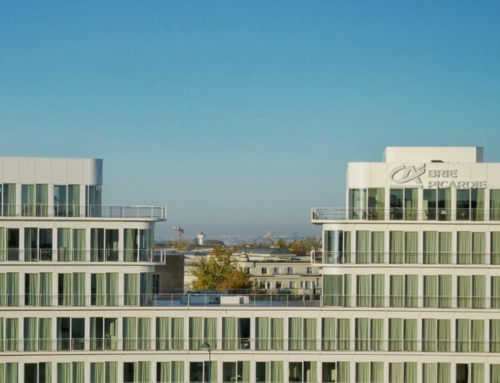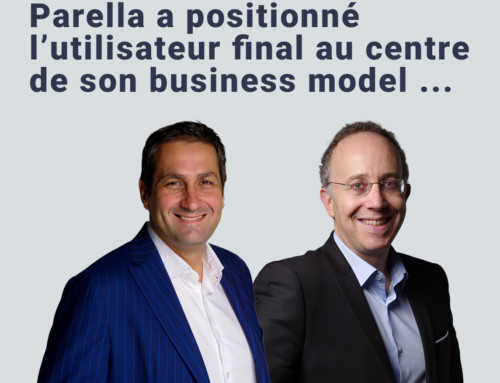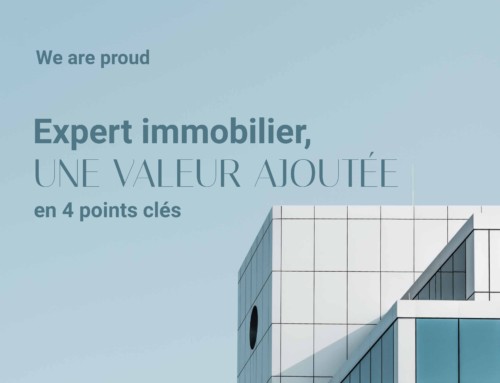Hybrid work: how to maintain corporate culture, collective and commitment.
The health crisis has changed the labour market. The spread of teleworking and the fact that employees are not prepared to give it up have made the hybrid model a new norm.
The balance of power has shifted. Today, it is the candidates who have the power. Attracting and retaining talent has become a daily struggle. For example, almost half of all employees who work remotely say they would resign if their employer demanded a full-time presence.
What is hybrid working? It is a work organisation in which employees are present in the office on certain days of the week and work elsewhere the rest of the time, either at home or in a third location.
This brings with it a new challenge for managers, who must help their teams to grow and find "rituals" to train them and unite them around the corporate culture without them being physically present.
Corporate culture: what are we talking about?
But before going further into the challenges to be met, it is important to define corporate culture, as it is a complex and difficult concept to master
Deloitte's Global Trends in Human Capital 2016 report (a survey of over 7,000 leaders) found that only 28% thought they "understood their culture well".
Culture is a set of representations (beliefs, aspirations), behaviours (way of interacting and behaving) and the tangible (environment, tools, workplace).
It is a social construction that is built around common references and creates a feeling of living together. The employees of a company unconsciously follow a set of common rules, because they are confronted with the same events, share the same vision and construct similar thought patterns. The behaviours they adopt become values, beliefs and therefore a culture.
Culture is not static: it is continually reinvented by the actions of a community. It's great to write the perfect work culture, but if it's not shared and practiced, it doesn't exist. A culture is about interactions, with tools, with others and with oneself.
A strong corporate culture is a powerful driver of business performance and engagement: it attracts and retains talent, supports productivity, reduces the risk of burnout, enables employees to reach their full potential.
It is also noticeable that organisations with an engaged culture have :
- 26% less staff turnover
- 100% more unsolicited job applications
- 20% less absenteeism
- 15% increase in employee productivity
- 30% higher customer satisfaction rate.
According to Glassdoor research, more than 77% of employees would consider a company's culture before applying for a job. More than half of them say it has a greater impact on job satisfaction than salary.
Maintaining the corporate culture: the new challenges of the hybrid model
Spreading and maintaining this corporate culture becomes more difficult in a hybrid organisation. There are many challenges to be met on several levels:
- Onboarding and meetings
Welcoming new employees is a major challenge in a hybrid world: how and when should they meet their colleagues? How will they feel and absorb the atmosphere and spirit of the company when they are only in the office for a few days, with only part of the workforce? How will they be trained and supported?
As the teams are spread out, informal exchanges can tend to disappear. The spontaneity of meetings is lost, as they must be organised and planned, like most interactions.
Fewer meetings, fewer shared moments, make cohesion more complicated
- Internal communication
In hybrid mode, asynchronous communication is needed internally.
For the less advanced companies, the biggest change will be to implement a writing culture to ensure that information and decisions are shared by all employees
- Managerial transformation and employee experience
Managing a team that is split between the office, home and third places is not the same as managing a team that is 100% in the office.
It implies greater empowerment and responsibility of employees, a strong dose of trust, additional efforts in communication and feedback.
It also requires a results-oriented culture, which focuses on the work done and the resulting deliverables. Clarity and precision on the expected results are key.
Managing also means taking care of your employees. However, the hybrid mode makes it much more difficult to take the pulse regularly. Yet it is crucial in a context where the boundaries between professional and personal life are becoming blurred. How can we ensure that the employee experience offered is the same on site and remotely?
- The appropriation of spaces
Many companies are adopting the flex office in conjunction with hybrid working. But it is a change that can be brutal for some employees and managers who lose their bearings and must find their place in these new spaces. What can be experienced as a depersonalisation of the workplace must be compensated for.
And at Orange?
At Orange, hybrid working was already in place long before the health crisis. It is therefore not seen as a revolution. However, it concerns more and more employees and the challenges are numerous:
- Increase in the number of staff concerned, reflection on the optimisation of space, linked to QWL
- Questions about the organisation of work, individual and collective time, setting up rituals
- Difficulty for managers in dealing with a new model that questions their relationship to work and the work space
- Difficulty for managers to see the workspace as a tool for their mission
- The challenge of appropriation, identification and understanding
The challenge is to offer the office a differentiating experience. We need to create value on site in order to boost collective intelligence and do things together.
What solutions are needed to meet these new challenges?
To achieve positive long-term results, one-off culture management is not enough. Organisations must deal with the subject on an ongoing basis and place it on the agenda of senior management. In the same way as monitoring financial indicators, culture management can be done by measuring the coherence between culture and strategic objectives, and by assessing, for example, the level of equivalence between desired and actual culture.
The organisations that have a chance of succeeding are those where the challenge is to promote a culture of permanent adaptation, of openness to their world, including the competitive world.
There are several areas of work available to them:
- Internal communication, to give meaning back
Internal communication is not always considered to be a priority for companies. Yet it is central to creating a corporate culture and engaging employees. It is through internal communication that objectives can be communicated transparently or that employees can find out the names of their colleagues.
Do not hesitate to multiply the channels, physical in the premises and digital for teleworking, and to repeat over and over again
It is advisable to share the company culture on the website and other platforms, such as the LinkedIn page, to help candidates learn about the company and to empower their own teams. Does a company's mission statement really reflect the day-to-day experience of each team? If not, time needs to be spent on reflection and change.
- Strengthening the social link
The lack of social contact is what employees suffered most during periods of forced total teleworking. It is one of the main areas to be addressed.
Maintaining team rituals (team meetings) is one of the simplest and most fundamental.
These can be convivial and informal times of exchange (breakfast, afterwork, etc.). The company can go further by organising unifying actions and challenges. Depending on its resources, it can use tools such as those proposed by Comeet, or UnitedHeroes or Kiplin for sports.
- Embodying culture in the workplace
The culture of the company will be reflected in the nature of the spaces present: pitch room for a start-up, creative lab for a tech company, reception offices for a law firm.
The brand will be visually incorporated into the spaces, which become real communication tools. Moreover, the history of the brand will be told through the paths of employees and visitors.
To facilitate informal encounters, centralised spaces will be created, services will be incorporated into common spaces and traffic flows will be re-imagined.
- Relying on technology
Numerous tools exist today that allow managers and employees to organise hybrid work (such as Jooxter and Coworklib) and to digitalise workflows.
Smartworkplaces facilitate hybrid collaboration, such as Teams, Slack or Klaxoon. By recreating virtual exchange spaces, they make exchanges more fluid.
And connected objects enable better use of the building.
Of course, each company will choose the tools best suited to its culture.
- Monitoring and support
Here again, many tools come to the aid of managers and allow them to take the pulse of their teams almost instantaneously and continuously, and to measure the commitment of employees. This is the case with Moodwork, Zest me up, Bloom at work and Tod.
But be careful, this does not replace the support that is essential to lead the change. It can take different forms: workshops, webinars, training, games, etc.
And at Orange?
Managerial support is very important, with concrete actions within the framework of building projects, but which are maintained and generalised even outside the projects
- Hybrid Management Thursdays: peer-to-peer sharing of best practices
- Flash course by Orange Campus on hybrid modes with tutorials, practical information
- To go further, individual approach with webinars or 2-day training courses
Orange works a lot with co-construction and follows the perception and feeling of the employees.
In terms of work spaces, there are many areas of work:
- Ensuring the presence of brand markers and corporate culture in the design and look of spaces
- Translating culture into space while allowing team-wide customisation. Individual customisation is reflected in the locker, the wallpaper
- Thinking about the employee's sound path, allowing them to choose the space and sound level that best suit them at any given moment according to their activity.
More broadly, spaces are designed to meet organisational and strategic challenges.
CONCLUSION
The workspace is one of the major levers for strengthening the corporate culture and maintaining the collective and commitment. It takes on its full meaning in a hybrid model
But it is not enough and it is above all the managerial models that must evolve.
Frédéricke Sauvageot, from Orange, sums up the challenge of the next few months for companies implementing their hybrid model: the office must become a destination
Follow us on Linkedin to benefit from the next articles, between deciphering and market views of our experts.






